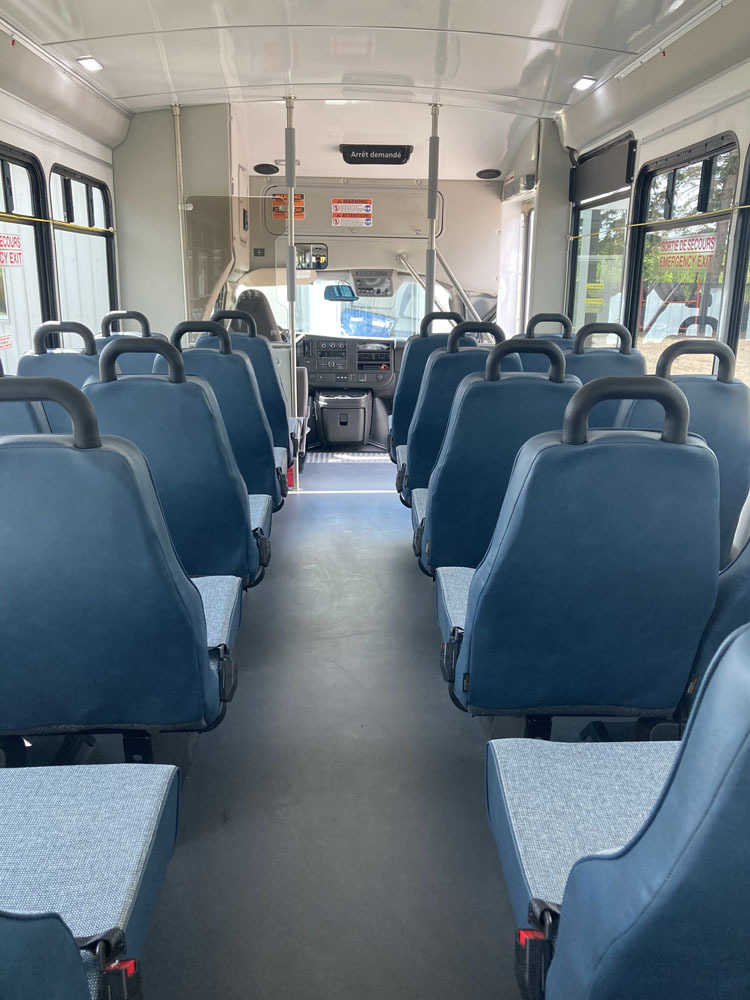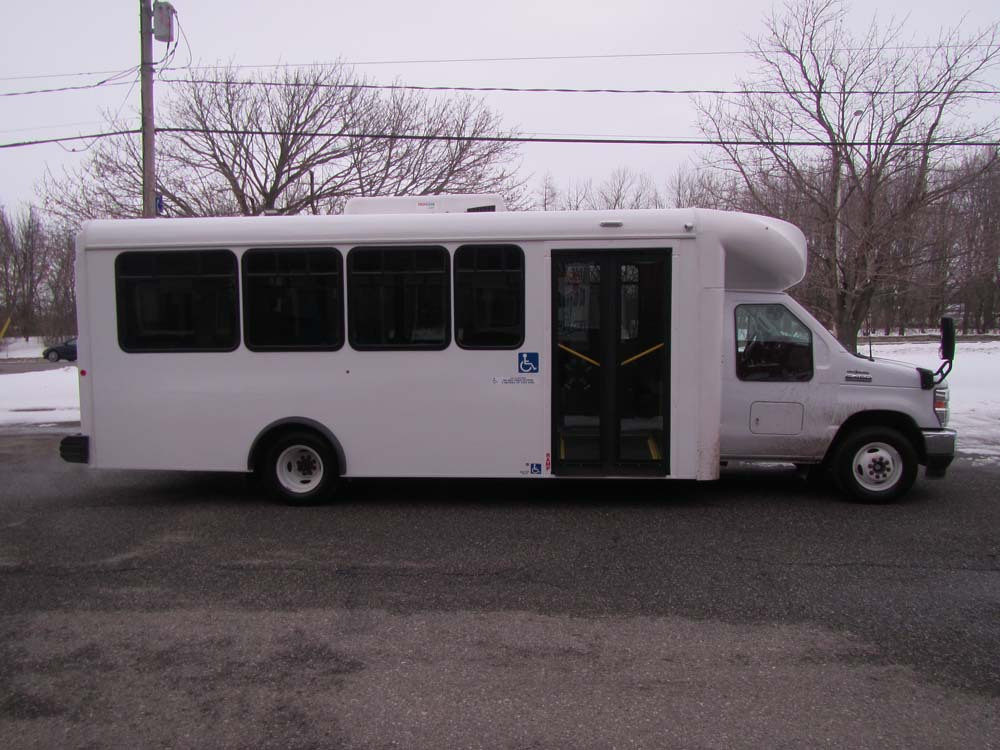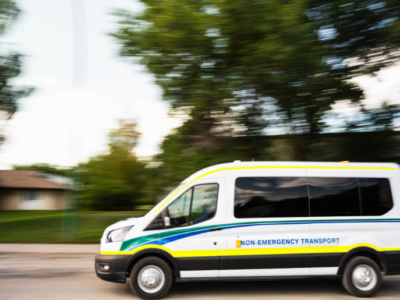Customizing buses for fixed routes is essential to ensure they meet the specific needs of the service and passengers. Fixed-route buses operate on a set schedule and follow the same path every day, so having the right features can make a big difference in how well they perform. By choosing the right options, you can improve efficiency, making it easier to keep on schedule and manage passenger flow. Custom features can also enhance safety, ensuring that both the driver and passengers are protected. Additionally, the right options can significantly improve the passenger experience, making rides more comfortable, convenient, and enjoyable. Whether it’s a clear destination sign, easy payment options, or comfortable seating, customizing your bus for its fixed route can lead to better service and happier passengers.
Essential Features for Fixed-Route Buses
Fare Boxes
Fare boxes are a crucial feature for fixed-route buses because they streamline the payment process, making it easy for passengers to pay their fare and for drivers to manage payments. With a fare box, you can quickly collect fares as passengers board the bus, reducing delays and keeping the bus on schedule. There are several types of fare boxes available, each suited to different needs. For example, cash-only fare boxes are straightforward and simple to use. For more advanced systems, you can opt for smart card readers that allow passengers to pay with pre-loaded cards, or mobile payment options that let them use their smartphones to pay. These options not only speed up the boarding process but also reduce the handling of cash, making transactions safer and more efficient.
Destination Signs
Clear destination signs are essential for communicating with passengers and helping them know where the bus is headed. These signs are typically placed at the front of the bus and display the route number and destination, making it easy for passengers to identify the bus they need to take. There are several options for destination signs, including traditional LED signs, which are bright and easy to read, even in low light. Digital displays offer more flexibility, allowing for multi-route programming where you can easily switch between different routes or display additional information. Clear and accurate destination signs help passengers feel confident that they are on the right bus, improving their overall experience.
Automated Announcements
Automated stop announcements are a key feature that enhances both accessibility and convenience for passengers. These systems automatically announce upcoming stops, making it easier for passengers, especially those with visual or hearing impairments, to know when they need to get off. This feature is particularly useful on fixed routes where stops are consistent, allowing passengers to relax and not worry about missing their stop. Automated announcements can be integrated with GPS, ensuring that the announcements are accurate and timely, adjusting in real-time to any changes in the route. This integration adds to the overall efficiency of the service, helping the bus stay on schedule while keeping passengers informed.

Seating Options for Fixed-Route Buses
Standard seating on fixed-route buses is made for short, frequent trips. These seats are usually compact and simple, focusing on being durable and comfortable without extra cushioning. The materials are tough and easy to clean, which is important since many passengers use the bus throughout the day. Easy-to-clean seats help keep the bus looking good and make maintenance quicker, ensuring the bus stays in great shape even with constant use.
Standing Room and Leaning Rails
In busy city areas where buses stop frequently, it’s important to fit as many passengers as possible. Fixed-route buses often have standing room and leaning rails to help with this. Leaning rails give standing passengers something to rest against and help them keep their balance. This setup is great for crowded routes where people might only stand for a few stops. By using standing room and leaning rails, buses can carry more passengers, reducing crowding and making the ride smoother for everyone.
Seat Belt Considerations
Fixed-route buses, which usually operate in cities or suburbs, often don’t need three-point seat belts like long-distance buses do. These buses travel at lower speeds and make frequent stops, so seat belts aren’t always necessary. Safety rules for fixed-route buses are different, focusing more on overall bus safety features like handrails, non-slip floors, and secure seating. This design ensures passenger safety and comfort while allowing easy movement on the bus without requiring seat belts on every seat.
Additional Features and Customizations
Surveillance and Security Systems
Keeping passengers safe is a top priority, and having surveillance and security systems on the bus helps with that. Installing cameras allows for real-time monitoring and recording, which can prevent crime and help address any incidents. Other security features, like emergency communication systems, can also be added to make sure passengers feel safe and protected during their ride.
Driver Assistance Features
Driver assistance features make fixed-route buses easier and safer to drive. GPS navigation helps drivers stay on course, especially on tricky routes. Collision avoidance systems warn drivers of hazards, helping prevent accidents. Communication tools like radios or intercoms help drivers stay in touch with dispatch and passengers. These features boost the safety and efficiency of the bus.
Our Customers in Public Transit
We’re happy to provide quality buses to our customers in public transportation that are designed for a fixed bus route. Whether it’s installing foldaway seating to maximize space, a front folding ramp for low floor buses, a bariatric seat, integrated child seat, a Morryde suspension for a smoother ride, or a Romeo Rim rear bumper, our in-house engineer professionals can accommodate your specific bus requirements.
- 9 passengers and up to 6 wheelchairs
- Bariatric seat
- Integrated child seats
- Morryde suspension
- Romeo Rim rear bumper
- Multi-function bus with foldaway seating
- Seats up to 19 passengers
- Combination seating for up to 5 wheelchair positions
Customizing a bus for a fixed route is important to meet the needs of both the service and its passengers. Choosing the right features—like fare boxes, destination signs, automated announcements, and seating options—can greatly improve how well the bus operates, ensuring it runs smoothly, safely, and comfortably. Additional options like security cameras, driver assistance tools, and specialized seating make the bus even more efficient and passenger-friendly. At Crestline, we’re committed to providing high-quality, customized buses that handle the demands of fixed routes. Whether you need to maximize space or enhance safety, our team is ready to customize your bus to fit your exact needs, ensuring a better experience for everyone.






